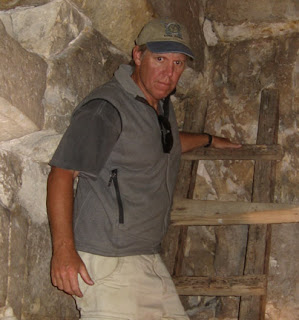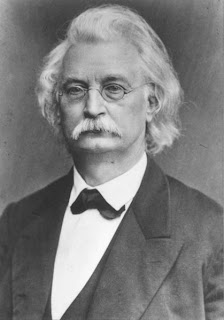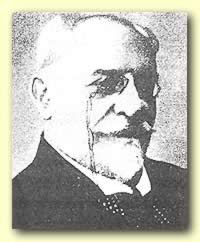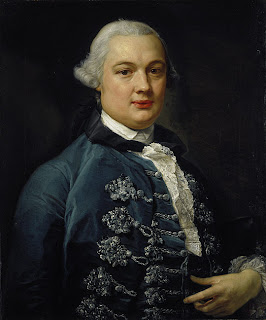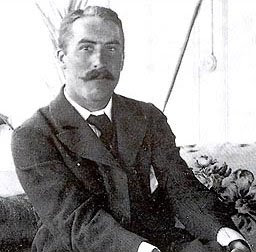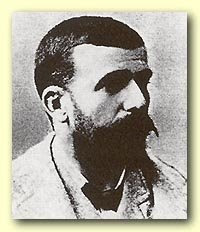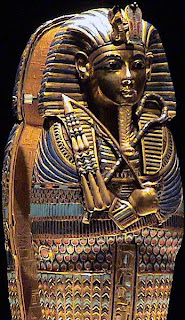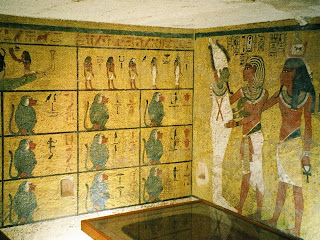Valley of the Kings, Luxor, Egypt
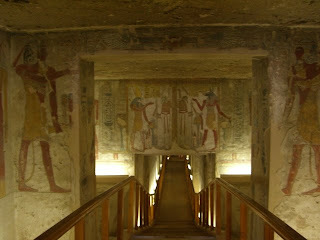
The tomb of Twosret and Setnakhte showing descending corridor
(Wadi Biban el Muluk = Gate of the Kings)
This is a valley in west bank of River Nile; part of the Theban Archaeological Sites (near Luxor or Karnak Temple). The Theban (old name for Luxor) sites include the Valley of the Kings, Valley of Queens, Nobles, Temples and Shrines pertaining to the Pharaoh period. During the Pharaonic times the Kings Valley was exclusively preserved for the burial of its dead members. During the New Kingdom Period (it was at this time the Pharaohs rose to most powerful position) that lasted almost 500 years the tombs were made cutting the valleys and the cliffs of mount Al Qurn.
A second life with all paraphernalia
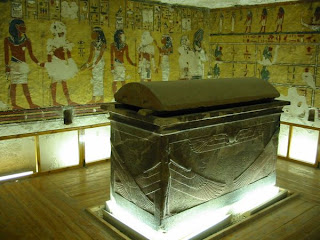 Tomb of Ay, Luxor - Valley of the Kings (Western Valley)
Tomb of Ay, Luxor - Valley of the Kings (Western Valley)
Ancient Egyptians believed in life after death within the same body; hence they preserved the dead ones after mummification. This is a process done to preserve the dead body so that the dead can happily go through his life after death. The internal organs were removed and some spices where stuffed in to the hollow parts; the body was embalmed with silk cloth for protection. Along with the body four jars were also kept with the removed internal organs like liver, lungs, stomach and intestine. There was also placed a shabti or statuette often made of marble or wood as company to the dead along with images of Egyptian gods for his care. Food materials, ornaments, gold, and all required for the dead for his after life were placed in his tomb.
The majestic Al Qurn a natural pyramid
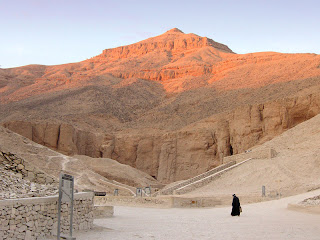
al-Qurn dominates the valley
The Valley of Kings was exclusive for the Pharaoh Kings and the tombs were made by digging the side of hill beneath the Al Qurn; building a good entrance and cutting long stairways that lead to the crypt where the body is placed. The Al Qurn Peak which oversees both of the valleys is shaped like a pyramid; reason for selecting it as the site, it isolated position offered better safety to the tombs. The location was carefully selected by checking the condition of the soil.
Tomb raiders and flash floods
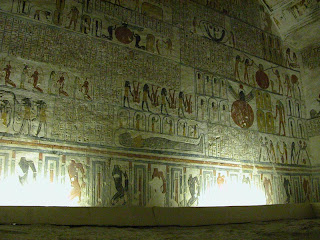 valley of the kings
valley of the kings
As these tombs contained valuable materials; it was a general practice for thieves to break in and rob the toms (they were called tomb robbers). There were royal guards posted for the protection of these sites yet most of the 64 tombs of the site remain broken. The damages were done from the part of the weather also; though the site is a part of the big Sahara Desert; two or three flash floods occurred within this long period but that was enough and more to immerse several valuable sites in mud and debris damaging the rare artifacts and paintings.
Virtual treasures!
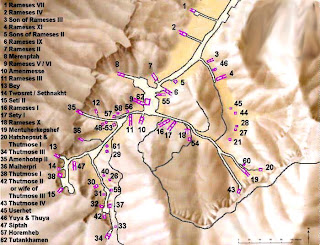 Valley of the kings map courtesy: crystalinks.com
Valley of the kings map courtesy: crystalinks.com
The status of these valleys (within the Theban Necropolis) as a Royal Burial remained intact for almost five hundred years (from the 12th to 18th dynasties (16th century BC to 11th century BC) and the number of tombs rose to that level the site got too much crowded and cutting tract for one often reached in to a previous one. There was no master plan or atlas to lead the grave diggers, yet it remains a mystery that such collisions were comparatively rare. While these tombs were virtual treasures of history and culture; in the absence of master plans they remained elusive to the explorers; about two centuries and hard labor of thousands of people were required to find them out.
Each tomb a task
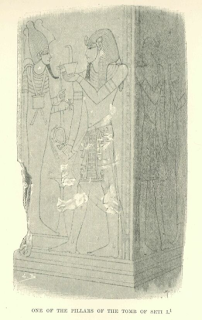 Pillar in Seti I's tomb
Pillar in Seti I's tomb
It is from the 18the century onwards serious researches commenced by archaeologists in these sites. They have done extensive works on this site and found many clues to demystify the ancient history of Egypt. There were no charts or a plan to the numerous sites which included shrines, tombs, graffiti etc. Most of the sites were immersed in mud and silt carried by the rare flash floods occurred in the region. The earth also was unpredictable and at times hard to dig while at times collapsed setting traps.
Tricks of the trade
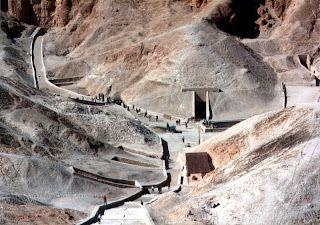 View of the central East Valley, showing area around KV62
View of the central East Valley, showing area around KV62
The tombs discovered were numbered prefixing ‘KV’ for the Valley of Kings like KV 1, KV 2 etc, those in the western valley are with prefix like WV 22, 23 etc. The digging of a tomb had to be done horizontally; that involved more strain; men had to work in tunnels that were humid, crammed and dark (this portion belonged to the Sahara Desert). The debris dug out could not be disposed as such as there was possibility of it containing valuable pieces of archaic importance. It had to be filtered then load it in a truck to be disposed from outside the site (leaving it within the site may waste another teams efforts at next time).
The following are the sites with names and relevance
KV 1 belongs to Ramesses 7; 20th Dynasty; discovered in 1984 by Edwin Brock,
KV 2 is of Ramesses 4; low down main valley located between KV 1 and KV 7.
KV 3 no marks of burial, might be for son of Ramesses 3, and later used a Christian chapel.
KV 4 is the last Royal Tomb; supposed to be of Ramesses 11 of the 20th Dynasty; excavated by John Romer.
KV 5 son of Ramesses 2; was a very amazing tomb that was lying filled with mud of the flash flood, though it was noticed as early as 1825 by James Burton and later by Howard Carter; its real quality assessed only during 1987 - 1995. The Theban Mapping Project undertaken by Kent A Weeks made a real break through; potsherds, beads, ushabti (funerary figures placed in tombs with other grave goods), a big statue of Osiris the god of afterlife etc were recovered from it.
KV 6, built for Ramesses 9; unfinished as king died earlier; big gate and ramp; final chamber with exquisite graffiti made for ‘opening of mouth’ ceremony (a ritual when the mouth of the dead is opened for breathe and talk); an Old Kingdom ritual.

KV6 - valley of the kings
KV 7 the final resting place for Ramesses 2; badly damaged by floods.
KV 8 built for Merenptah; corridor 160 meters long; sarcophagus was originally built in four nested stones.

KV 8 - valley of the kings
KV 9; built for Ramesses 5 but had to be used for his uncle Ramesses 6; built in typical 20th Dynasty simple style.
KV 10; believed to be of Pharaoh Amenmesse.
KV 11; built for Ramesses 3; opened in unknown times; also known as Harpers Tomb as there are pictures of blind harpers on its walls; as Bruce entered in to it in 1761it is also called Bruce Timb.

KV 11 - valley of the kings
KV 12; a tomb used for multiple burials; similar to KV 5; excavated by Harold James, Otto Schaden and Howard Carter.
KV 13; said to belong Bay the owner of the tomb who was executed by Pharaoh; but no remains of him found; excavated by Hartwig Attenmuller.
KV 14; one of the largest tombs; made for two persons; was opened in antiquity; recordings made by Hartwig Altenmuller between 1983 and 87.
KV 15; made for Pharaoh Seti 2; the sarcophagus removed and an unidentified mummy placed instead of it; excavated by Howard Carter.
KV 16; built for Ramesses 1 of the 19th Dynasty; decorated with the ‘Book of Gates’ (a sacred text of ancient Egypt which states that the soul of the dead has to pass through numerous gates each guarded by a goddess; only after answering her questions one can pass through; those who fail will be put in to the lake of fire!); excavated by Geovanni Belzoni.
KV 17; built for Seti 1; the largest tomb but damaged by ‘explorers’ who removed some sections to be taken away; excavated by Geovanni Belzoni, G. Battista and Howard Carter.
KV 18; is incomplete.
KV 19; made for Ramesses 8 but had to be used for Ramesses 9; paintings of Egyptian Gods like, Osiris, Ptah, Khonsu, Thoth etc decorate the walls; excavated by Belzoni.
KV 20 is significant as the tomb for Thutmose and Queen Hatshepsot (queens body was identified only on June, 2007 by DNA tests; the body of Thutmose 1 was removed by Thutmose 3 later to KV 38; excavated by Howard Carter.
KV 21 contains only unidentified mummies of two women; excavated by Geovanni Belzoni in 1817;
WV 22 (in western valley); tomb of Amenhotep 3 with two dub burial chambers for his wives; sarcophagus missing; discovered by Prosper Jollois; and Edouard de Villiers both Napoleon’s engineers; officially excavated by Howard Carter.
WV 23; near Luxor in Western Valley; tomb of Pharaoh ‘Ay’ desecrated by unknown and sarcophagus is reconstituted; excavated by Geovanni Battista and Belzoni..
WV 24 not fully excavated; discovered by Robert Hay; partly excavated Otto Schaden.
WV 25 presumed to be built for Akhenaton’s Theban Tomb and left unfinished; excavated by Geovanni Battista and Belzoni.
WV 26 occupant not identified; it is a small one; must be of the 18th Dynasty; excavated by James Burton.
KV 27 discovered by John Wilkinson in 1990; it is undecorated and unfinished; occupant unknown; excavated by Donald P Ryan.
KV 28 occupant unknown; first excavations unrecorded; Donald P Ryon has found parts of two damaged body parts; presumed to be of the Nobles.
KV 29 not excavated.
KV 30 occupant unknown; discovered by Belzoni in 1817; a mission sponsored by Lord Belmore hence known as Lord Belmore’s Tomb; excavated by Victor Loret.
KV 31 covered in sand and debris; nothing known about the occupant; excavated by Geovanni Belzoni.
KV 32 burial site Tia’a; wife of Amenhotep and mother of Thutmose 4; discovered by Victor Loret in 1898; excavation incomplete.
KV 33 not fully excavated; nothing known of the occupant; discovered by Victor Loret.
KV 34 occupant Thutmose 3; 18 dynasty Pharaoh; sarcophagus though damaged still in place; widely vandalized by tomb raiders walls decorated in unusual style; excavated by Victor Loret..
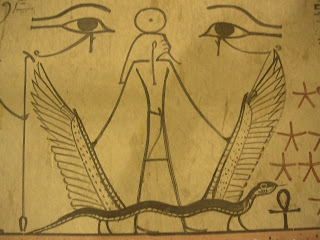
KV 34 - valley of the kings
KV 35 occupant Amenhotep 2; discovered by Victor Loret in 1898; the tomb has the shape of a dog’s leg; lower part holding the sarcophagus of the king; later it became a cache of various mummies like Amenhotep 3, Thutmose 4, Seti 2, Septah, Ramesses 4, 5 and 6, along with many unknown mummies.
KV 36 occupant Maiherpri a Noble; details unpublished; discovered by Victor Loret.
KV 37 badly damaged; occupant unknown; discovered by Victor Loret.
KV 38 original tomb of Thutmose 1; later the body removed to KV 20 by Thutmose 3; discovered by Victor Loret.
KV 39 located in high on the hills away from other burials in the eastern part of Al Qurn; its structure also varies from other tombs
KV 40; original occupant not known; barring the upper portion all remain filled with debris; excavated by Loret in 1899.
KV 41; occupant not identified; found by Loret.
KV 42; made for Hatshepsut wife of Thutmose 3 but it was Sennefur got buried there during the time of Amenhotep; excavated by Victor Loret and Howard Carter.
KV 43; tomb of Thutmose 3; shaped like a dog’s leg; discovered by Howard Carter; located on the higher side of the cliff far above the valley; decorations of the walls intact; the outer stone of sarcophagus intact within the burial chamber excavated by Howard Carter for Theodore M Davis.
KV 44; occupant not known; pottery fragments retrieved indicate 18th dynasty tomb; but it was reused in the 22nd dynasty time; excavated by Howard Carter and Ryan.
KV 45; made for Usarhat a Noble of the 18th century.
KV 46; tomb of Yuya and wife Tjuyu parents of Queen Tiye wife of Amenhotep 3; tomb rediscovered by James E Quibell in 1905; it is one of the best preserved tombs in the site with even the sarcophagi intact.
KV 47; tomb of Siptah of the 19th dynasty; discovered by Edward Ayrton.
KV 48; made for Noble Amenemopet;
KV 49; not a tomb; might be a ‘mummy repairing unit’; excavated by Ayrton.
KV 50 to 53; burial ground for animals explorations made by Ayrton.
KV 54; not a tomb; a pit located near the tomb of Seti; large jars carefully packed with invaluable articles; at present kept in Metropolitan Museum of Arts.
KV 55; severely vandalized years back; believed to be of Akhenaten son of Queen Tiye of 18th dynasty; marks of multiple burials done in the site; a mummy has been found with ornaments missing (later the golden plates were returned by a collector to Munich; at present the same in Egyptian Museum. Four canopy jars made of alabaster along with some damaged wooden pieces with her name inscribed were found in the tomb; discovered by Ayrton.
KV 56; original occupant unknown; casket disintegrated; known as golden tomb as some gold ornaments, a pair of silver gloves, a set of ear-rings marked Seti 2 found; discovered by Ayrton in 1908; were present on the mummy;
KV 57; burial of Horenheb the last Pharaoh of 18th dynasty; sarcophagus carved out of red quartzite; passages of the book of the Gates and painted bas relief instead of paintings; discovered by Ayrton in 1908.
KV 58 known as Chariot Tomb; remains from WV 23 (Ay’s) tomb dumped in to it; it was discovered by Harold Jones.
KV 59; it is incomplete and no remains present.
KV 60; occupant presumed to be Queen Hatshepsut; seriously desecrated in antiquity; discovered by H. Carter in 1903; reopened in 1906 by Donald P Ryan and Edward P Ryan; had two mummies which were taken to Cairo Museum for research in 2007; one is presumed to be of Sit Ra the Royal Nurse and the other of Queen Hatshepsut.
KV 61; no proof of any burial made in this tomb; discovered by Harold Jones in 1910.
KV 62; belonged to the mysterious child king Tutankhamun; being located beneath a labor colony it could escape the hands of tomb robbers; discovered first by Theodore M Davis; but unfortunately they did not realize the real size and returned exploring only the top chamber. Harold Carter was the explorer who found the real tomb and the accompanying treasures.
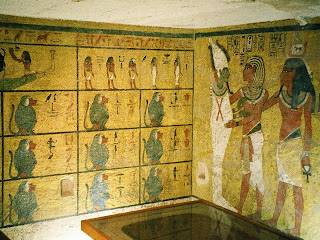
KV 62 - valley of the kings
KV 63; this is the most recent find; it was not a tomb but a mummy preparing chamber but valuable finding could be made like big jars, salts, linen, pieces of potter etc (pottery is for archaeologists like open books they can read much from a piece).
KV 64; located near KV 63; found in March 2006; no remains found; its status as a tomb and the number ‘KV 64’ itself not yet approved.
The absence of a master plan of the tombs makes it hard to say whether there is any more lying undetected; however it is presumed that most of the tombs in this site have been detected and excavated.











